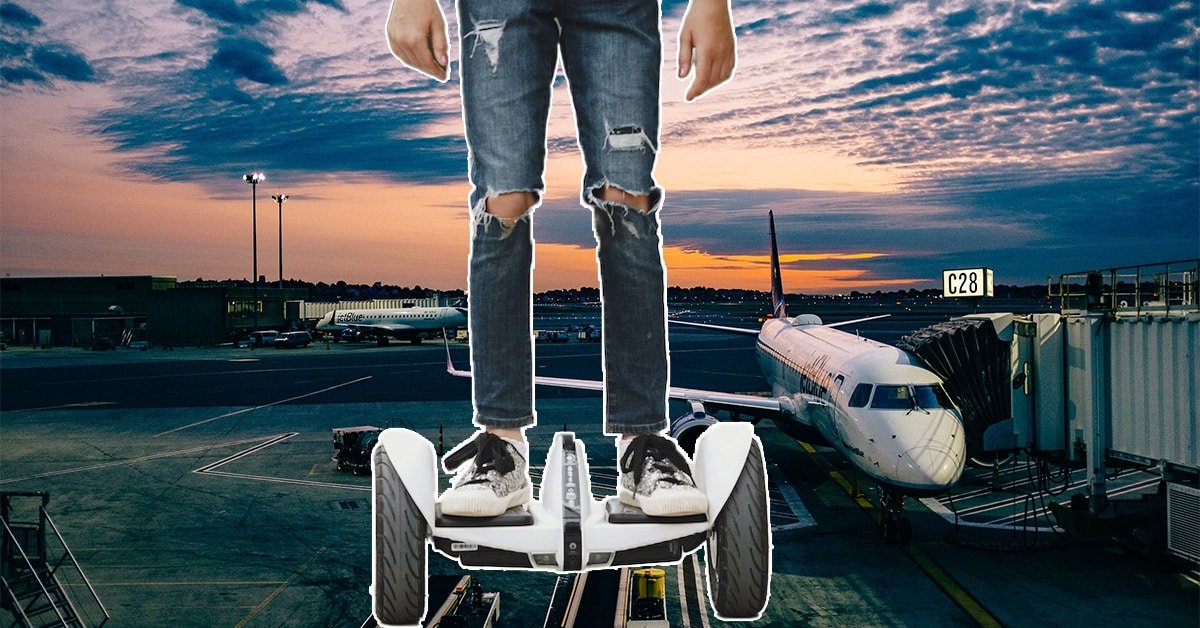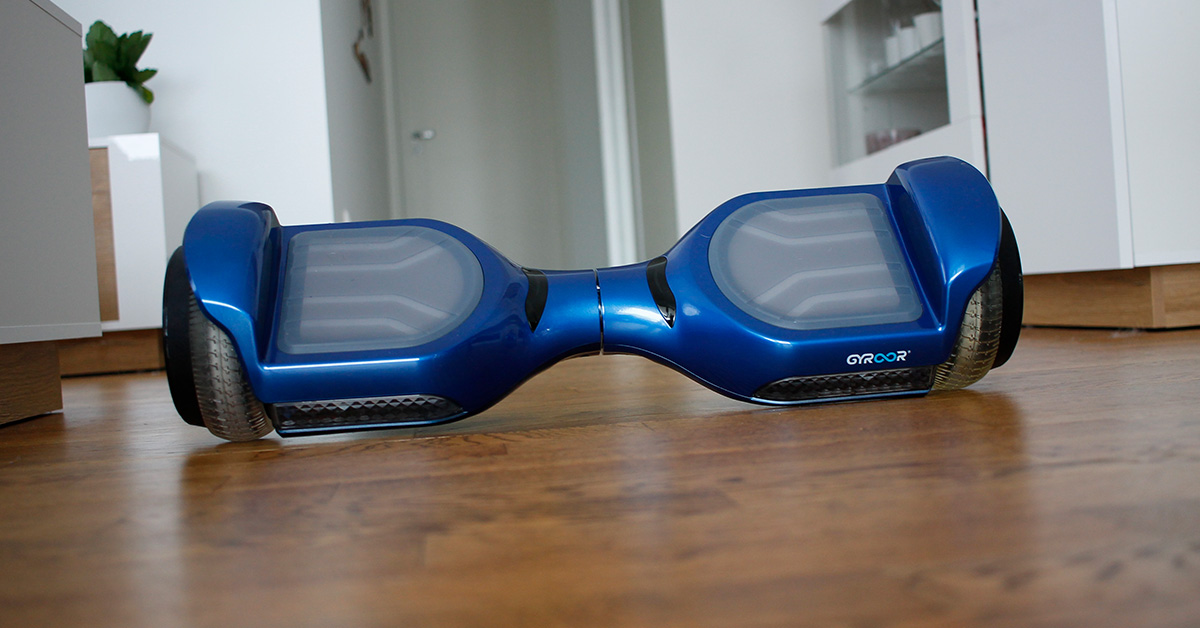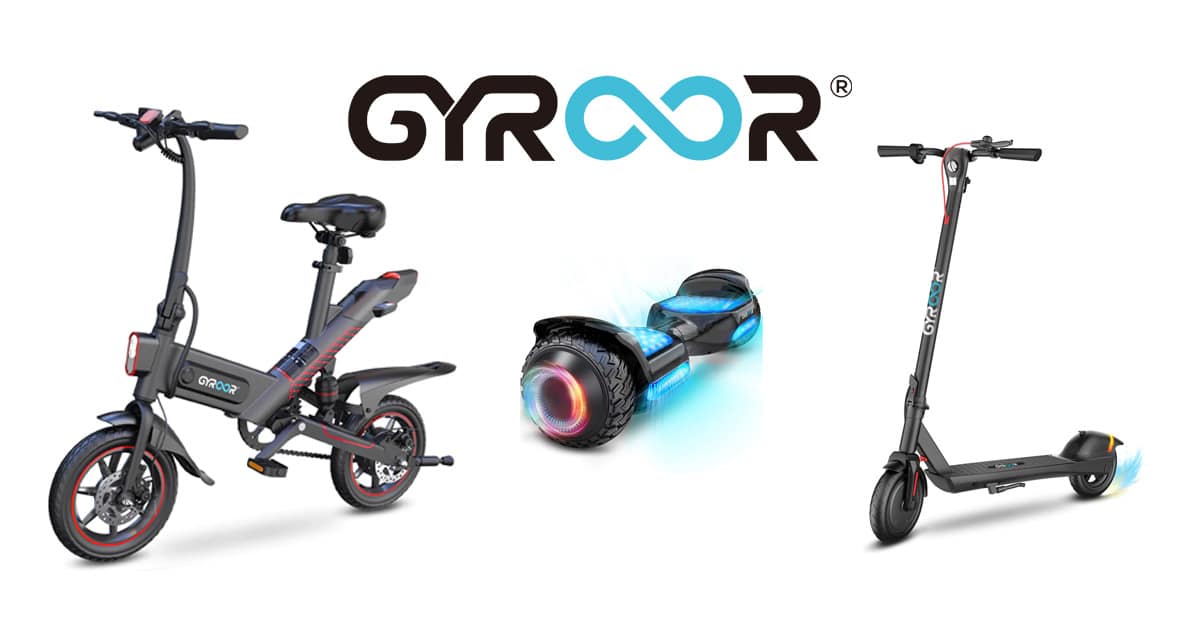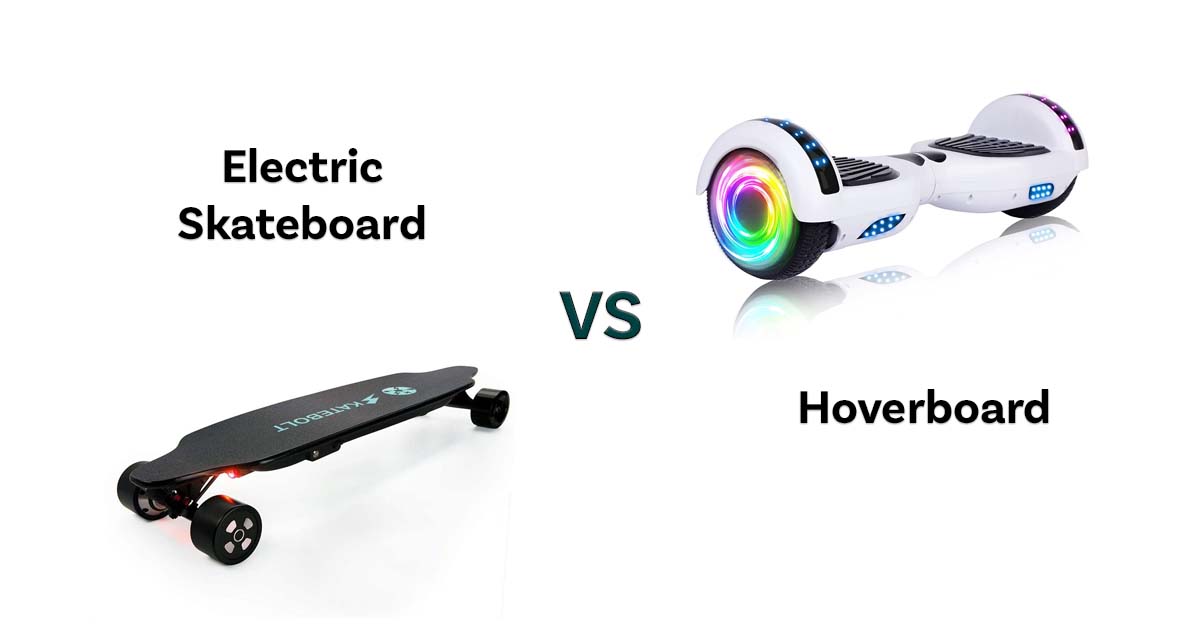Hoverboards
Welcome to our Hoverboard page, where we’ve gathered everything you need to know about these sleek and futuristic two-wheelers.
Hoverboards, also termed self-balancing scooters are one-of-a-kind two-wheelers that combine functionality with adventure. They are portable machines that run on two wheels and largely entered the market in the year 2015. Since then, the device has been gaining increasing popularity, especially among kids.
More of a recreational vehicle that looks quite similar to a skateboard in terms of its shape and size, a hoverboard doesn’t actually float. (but in reality, a hoverboard and an electric skateboard are totally different)
Instead, it has got two wheels separated by a footboard and is powered by electricity and a battery. The best part about the device is that it lets you travel without pedaling or pushing the hoverboard off with your feet.
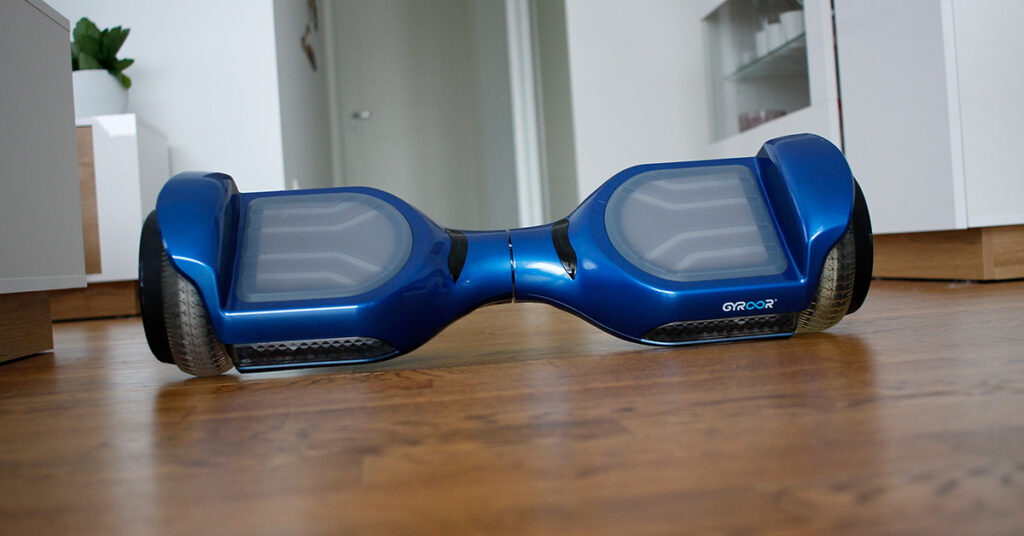
When Did Hoverboards Come Out?
The first Hoverboard was founded by the American businessman Shane Chan in May 2013. He launched a fundraising campaign. In 2014, the Chinese company Chi Robotics released its first Hoverboard at the Canton Fair Trade Show, which gained huge popularity in the West quite soon.
Prior to that, hoverboards were popularized by the highly loved film franchise, Back to The Future. The movie depicts a scene with a flying hoverboard that simply lets the rider levitate in mid-air, stealing the attention of the kids and grown-ups alike. Since then, research and development have been going on to develop a hoverboard that actually makes flying happen for real.
How Do Hoverboards Work?
A hoverboard comprises a number of components, each of which serves a specific purpose in its functioning.
The main components of a hoverboard are:
- Wheel sensor
- Gyroscope
- Main logic board
- Battery
- Tilt sensors
Let’s take a closer look at the process that makes the hoverboard work!
The Wheel Sensor
The wheels have electric motors themselves, as well as a sensor to control the tilt and speed. The sensor detects the rpm (revolutions per minute) of the wheels, further sending it to the gyroscope.
Gyroscope
A gyroscope is a device that measures or maintains orientation and angular velocity. The gyroscope and speed control boards send the information from the sensors to the logic board.
The Main Logic Board
The logic board is where the hoverboard’s processor calculates the status of the board, the ride speed, the tilt of the wheels, and the relative speed in real time. It also determines if you are in the beginner mode as well as handles the hoverboard’s power management.
The Battery
While different boards come with different battery packs, most of them feature 36V 4400mAH batteries. This is the part that allows the board to function.
Movement Detection
Hoverboards feature pressure pads sitting on two separate switches.
The front switch is pressed down when the rider leans forward, further sliding a small plastic wall between an infrared sensor and an LED.
The logic board ensures that the motor is still as long as the sensor detects the light. However, the motor starts spinning in a specific direction when the infrared LED is interrupted.
The Balancing Process
The tilt sensors help the gyroscopes determine how much the rider is leaning forward, which is further sent to the logic board. The logic board tells the motors to spin more when you lean more forward. The whole idea is to allow the rider to control the hoverboard’s speed with their weight.
Here’s a fun video of how to ride a hoverboard:
Are Hoverboards Safe?
There’s no doubt that hoverboards are super fun, but there are also some risks involved.
Fractures and Bruising Because of Falling
It is quite common for children to fall off their hoverboards and end up with injuries to the wrists, head, and forearms. This includes serious bruising, fractures, as well as strains. Some say that falling and getting up is just a part of being a child. That’s how they learn and get experience.
However, there are some easy tips to make riding with a self-balancing scooter safer:
- Wear the appropriate gear. This includes a helmet, knee pads, wrist guards, and elbow pads. It’s good to wear padded shorts made for hoverboarders to ensure extra safety.
- Get away from traffic. Make sure you don’t let your kids ride in or near traffic.
- Right falling technique. Enroll your kids in hoverboard lessons if possible. The right falling technique and other tips will prevent injuries and accidents.
- Follow the manufacturer’s restrictions and limits. Hoverboards usually have age and weight limits.
Overheating Problems
Speaking of some first models, the batteries can malfunction and lead to fires. Most boards feature lithium-ion batteries as they are compact yet store great power. However, those batteries are at risk of explosions and overheating, which can further lead to mishappenings.
Although, there are some tips you can follow to reduce the risk of your hoverboard catching a fire.
How to eliminate the fire risks of a hoverboard?
Buy a UL-certified product
UL2272 is a certification, that is given to electrical mobility devices that have gone through safety tests and met all the standards.
Make sure to never go for a hoverboard that’s not UL2272 certified. There are many budget-friendly yet safe hoverboards out there.
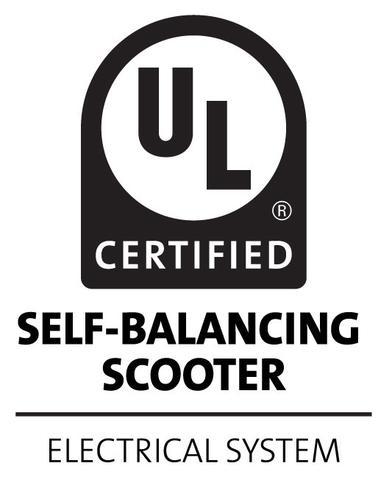
Avoid overcharging
Make sure you don’t leave your machine totally unattended while it’s charging and don’t overcharge it ever. Overcharging the battery can explode it even for a high-end machine. When the battery is full, unplug it.
It is even recommended to take your hoverboard for a short ride after charging. So the battery level wouldn’t be 100% when you store it for a longer time.
Be gentle with your hoverboard
Be careful and don’t kick or drop your hoverboard to avoid damaging the separator sheets in the battery as it can cause a fire.
Don’t store your hoverboard under the sun
Most hoverboard batteries can explode when they get too hot. So never leave it in a room with direct sunlight for several hours. Keep it in a cool spot away from flammable objects.
How Much Is a Hoverboard?
Nowadays, hoverboards are much more affordable than they used to be a while back. How much does a hoverboard cost today entirely depends on the specific features and size of the machine?
Typically an off-road hoverboard starts at as pocket-friendly as $100 while the price keeps increasing as the specifications get better. For $200-$300 you should get a pretty decent hoverboard. However, some high-end hoverboards can cost even over 1,000 bucks.
A hoverboard that’s priced around 1,000 dollars will usually come with a powerful and bigger motor, thereby delivering faster and smoother riding experiences even on rough surfaces.
What determines the price of a hoverboard?
As mentioned above, the price of a hoverboard can vary quite a lot. Let’s take a look at those factors and considerations that determine the cost of a self-balancing scooter.
Speed
The top speeds largely vary from one hoverboard model to another, usually ranging between 6mph – 10mph. Speeds higher than that can be risky for newbies and kids, but the specified range is perfect for a great riding experience.
Range
The range that your hoverboard delivers depends on its motor, battery, and speed. Models that can go up to 10 miles when fully charged are usually more expensive.
Motor
Most models deliver 400 watts to 800 watts of power, while the cheap ones go only up to 600 watts. However, a hoverboard becomes more efficient with more power – it can go more miles, ride faster, climb slopes easily, and carry more weight.
Battery Life
One of the most significant considerations is to go for a hoverboard with good battery life. Most models ride around 2 hours in one full charge, but the expensive ones can travel more without being powered down.
Safety Certifications
No matter how cool a model looks or what features it has, safety remains the most important consideration when buying a hoverboard.
The market is loaded with so many cheap hoverboards that often compromise the rider’s safety. Make sure to go for a model that has UL certification and comes from a trusted manufacturer.
The certificate means the hoverboard is thoroughly tested and is completely free from explosions, fires, and electric failures.
Charging Time
Not only is it essential for a good hoverboard to charge quickly, but also performs in a single charge for a good duration.
Most good options out there allow the rider to go 6-12 miles with a fully charged hoverboard while taking 1-3 hours to charge. Make sure you pay attention to the charging time and the time it takes for a model to drain the battery.
Weight and Weight Capacity
Most hoverboards can carry 44 lbs to 220 lbs, while certain models are designed for heavy riders. Go for a self-balancing scooter that suits your specific weight.
Another key element is the weight of the hoverboard. If the hoverboard is very lightweight, it is more convenient to transport it. Lightweight materials can be more expensive.
Wheel Size and Used Materials
Make sure to always go for a hoverboard with the right wheel size and material.
The wheel size may vary between 6.5, 7, 8.5, and 10 inches, and the selection depends on the type of terrain you’ll ride on. Hoverboards with a wheel size above 8 inches work best for rough terrains, while any size works fine for smooth surfaces.
Speaking of material, you must go for durability and ensure that the wheels can withstand different surfaces.
Brand
Always purchase a reliable, branded model that comes with a UL certification. This not only ensures safety but also good quality material, durability, and a smooth-riding experience.
On the other hand, you must take into account that quality brand products may cost a little more than some no-name brands.
Additional Features
High-end hoverboards boast numerous amazing features like Bluetooth connectivity, LED lights, cool wheel designs, etc. Some allow you to connect them with a smartphone app, while others also offer a training mode for learners.
Our Experience with Hoverboards
Having tested and reviewed several hoverboard models, we’re well-versed in their capabilities and nuances.
Our introduction to hoverboards came courtesy of the micromobility brand Gyroor, who graciously sent us their hoverboard model G11 to try out.
At first glance, it promised effortless gliding, but like any new skill, there was a learning curve. Yet, after dedicating some time and mastering the basics, the ride transformed into pure, exhilarating fun.
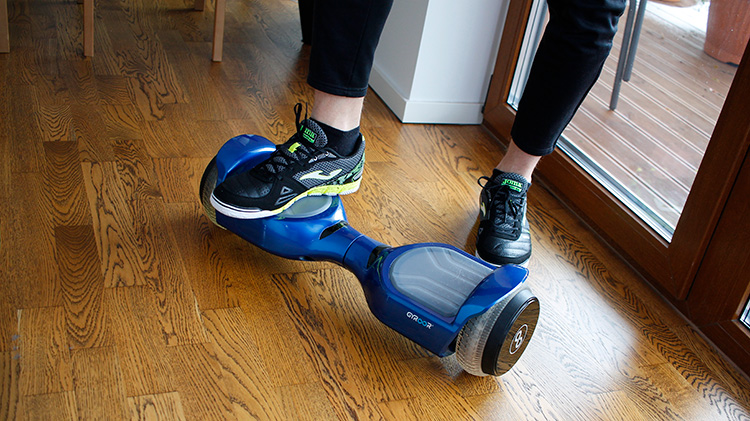
While they offer a thrilling ride and are undeniably fun, our personal take is that hoverboards are best enjoyed as recreational toys. For serious commuting or transportation, there are more practical options out there.
Hoverboard FAQs
How long does it take to charge a hoverboard?
The battery is one of the most expensive parts of the hoverboard. So, the more you pay, the better battery you get.
In most cases, hoverboard charging time is as follows:
- Cheap hoverboards: 4-6 hours
- Mid-range hoverboards: 2-3 hours
- High-end hoverboards: 1.5-2 hours
How fast does a hoverboard go?
High-end hoverboards usually go up to 10 miles per hour, while average mid-range models go around 6-8 mph. Here is a list of the fastest hoverboards.
How long does a hoverboard battery last?
An average hoverboard battery can last up to 2 hours. The real battery life depends on several factors:
- Type of terrain
- Weight of the rider
- Weather conditions
Can I leave my hoverboard plugged in overnight?
No!
One of the main safety considerations is not to leave your hoverboard totally unattended when it’s charging. A hoverboard can explode when you overcharge it. Always unplug when the battery is full.
Can you ride a hoverboard on the grass?
Of course. For off-road riding, your hoverboard should have at least 8″ wide wheels. Then you can ride easily on the grass, as well as on gravel and dirt. Check out our list of Best Off-Road Hoverboards.
What is the weight limit for a hoverboard?
It really depends on the hoverboard type. Is the hoverboard meant for kids or adults? How big are the hoverboard wheels? What materials are used?
The weight limit of the hoverboard usually varies from 120 lbs for children’s models to 420 lbs for adult models. Read more about hoverboard weight limits.
Are there different types of hoverboards?
If you hear the word ‘hoverboard’, then most likely it is meant a two-wheeled vehicle, where you have to stand on both legs next to each other.
In reality, there are different types of hoverboards. They can be with 1 wheel, 2 wheels, or 4 wheels, with or without the handle.
What kind of accessories are there for hoverboards?
The most popular accessory for hoverboards is a hoverboard seat. It’s like a conversion kit that transforms your hoverboard into a hoverkart.
Additionally, there are different hoverboard carry bags, covers, skin decals, and more. Read more about the best hoverboard accessories.
Can I buy hoverboards from Amazon?
Amazon is one of the most popular places to buy a hoverboard. There are a wide variety of brands available at different prices. Here is the list of best-selling hoverboards on Amazon.
Is it allowed to take a hoverboard on a plane?
Generally, hoverboards are prohibited from planes, so you can’t take them with you when you are traveling by plane.


